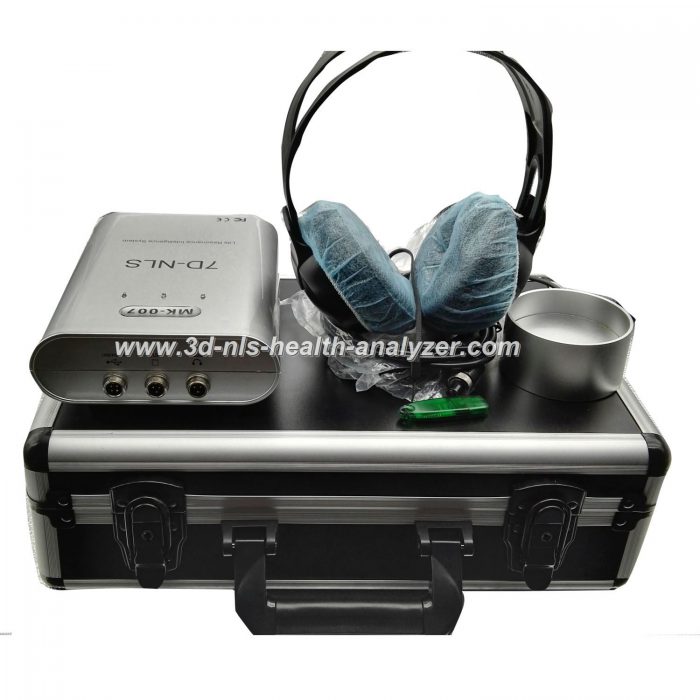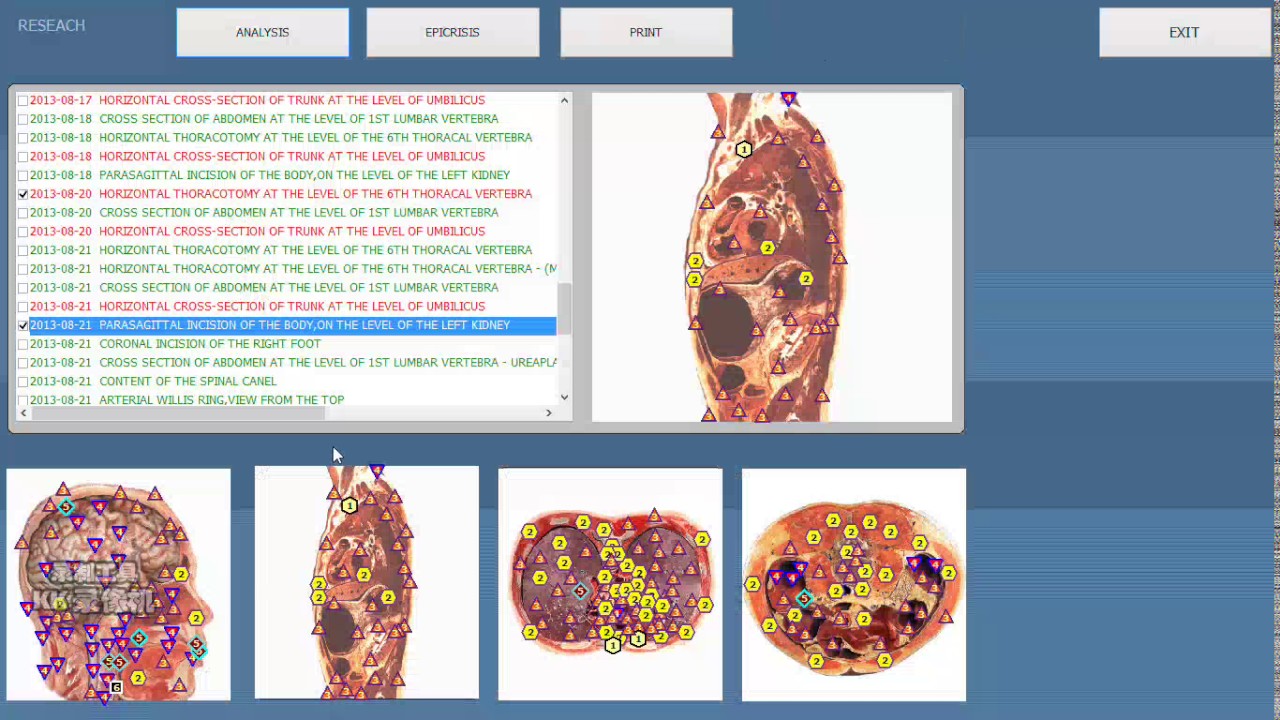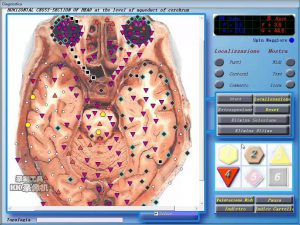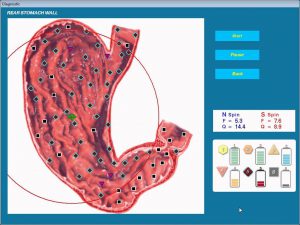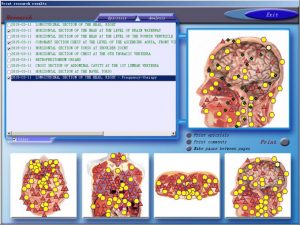NLS Theory-Gariaev PDF download parts 6



NLS Theory-Gariaev PDF download
NLS Physics of Information Medicine.pdf free download
Physics of Information Medicine.pdf
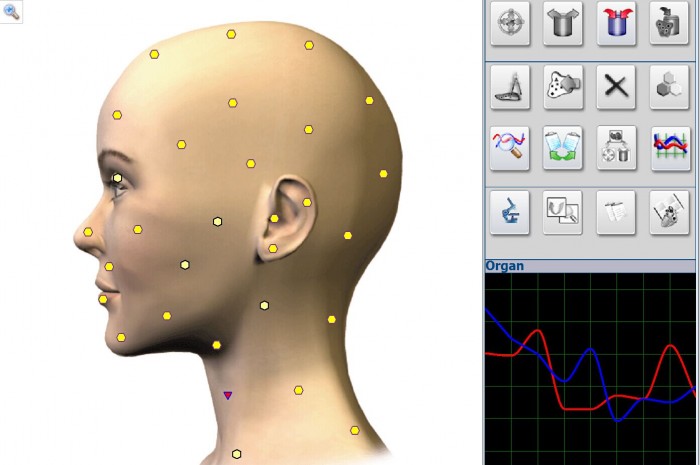
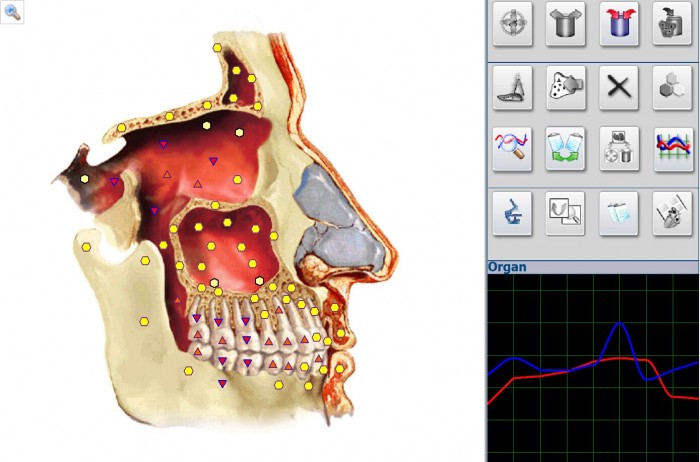
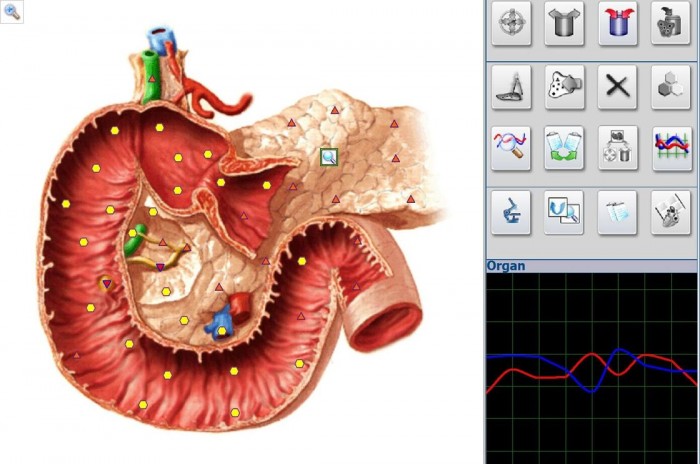

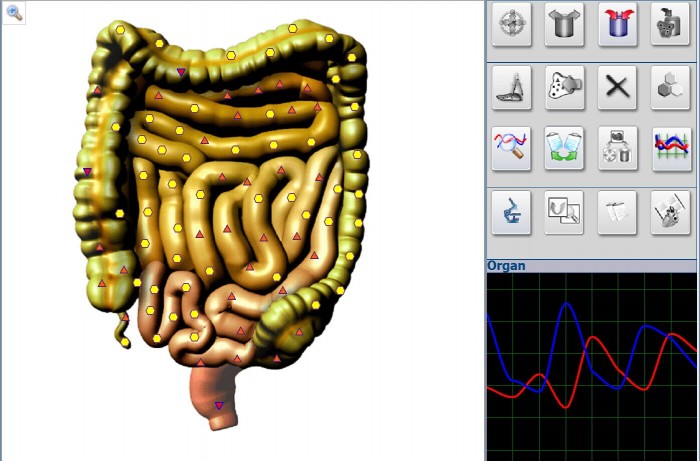
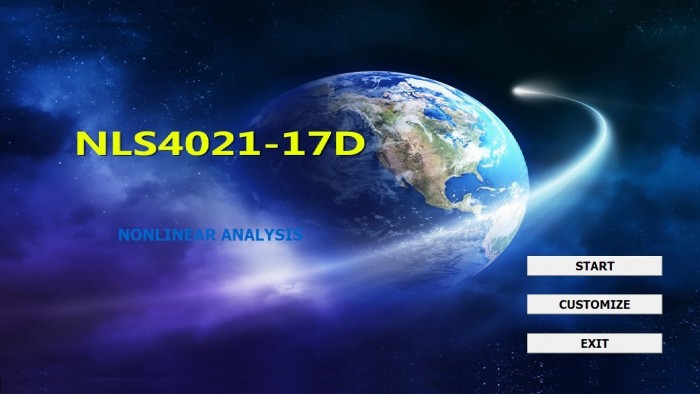
Theoreticalpart
IV. Localization of light in the elastic channel of scattering. The possible recording and
reading of the information located in spatially correlated non-uniform systems.
10
In the experimental part of this work we have presented results which indicate:
• the possibility of reading the spectrumof excitations ofcrystals andbiologicalstructures;
• the possibility of long-time storage of this information;
• the possibility of the subsequent reading and transfer of this information.
Experiments were carried out in a radio frequency range by means of the device (PLR-
spectrometer) described above.
Here we propose a possible theoretical interpretation of these experiments. Its foundation lies in
our basic ideas on the theory of localization of light in dispersed spatially correlated systems.
The phenomenon of light localization has enjoyed wide popularity since the 1985 publication of
work [1]. Now it is one of most dynamically developing areas of physics, closely bound with
such “fashionable” problems as, for example, quantum teleportation, new methods of recording
and reading information, etc. [6,12,13].
Fig. 5 The scheme of experiment with supervision of weak localization of light
The research described in work [1] investigated the reflection of light from a transparent cuvette,
filled with the smallest particles of latex weighed in water, in conditions where the length of a
wave of a incident photon
is less or equal to is theaverage distance between particles). On a background of Frenel’s
reflections, in a backward direction a very narrow peak of intensity of the scattered light (Fig. 5)
was observed. The signal exceeded background values 2 times. For an explanation of this effect
it is enough to consider scattering on pair the particles which have appeared for a way of a
photon. In this case, the trajectory of a photon reflecting in the backward direction is an
infinitely narrow loop. We shall assume, that the photon can pass this loop two ways – clockwise
and counter-clockwise.
11
These two ways are represented in a Fig. 6а. They are indiscernible.
Fig. 6а. Two ways of passage by a photon of aloop on its trajectory in conditions of weak localization. 6b. a
turn of a photon between two particles, provided that the photon trajectory is a one dimensional line.
In such cases the quantum mechanics orders to calculate probability P of a turn of a photon is as
follows. Each process has the amplitude of probability associated with it and the probability of
a turn (we considered that both amplitudes have identical phases – as features
of movement on a loop [14]).
If we had a hypothetical opportunity to distinguish between these ways, the probability of a turn
would be considered completely differently and would be twice less: . The
formal reason of peak in a back direction back is this. However, the occurrence of the peak in a
back direction is not accompanied at all by the appropriate reduction of scattering of light in any
other direction [11]. How do we reconcile this with the law of conservation of energy and
whence those additional photons which have formed the peak? A second question is – why is this
peak not observed at reflection of light from continuous half-space? And finally – From what we
have seen, are there two types of movement of a photon between a pair of particles? If a
trajectory of a photon between particles is a one-dimensional line, what can be said about two
various ways of its detour?
A turn of a photon between two scatterers – unequivocal image of the certain procedure
represented in a Fig. 6b).
So, we would very much like, that there were two ways of passage of a photon of indefinitely
narrow loop between two particles. This can be achieved if we assume that the topological
dimension of a trajectory of a photon in conditions of weak localization d < 1. Only in this case
we can place inside one one-dimensional line of figure 6b. two different “lines” – the topological
object similar to a loop, i.e. described by two ways of its detour.
12
Fig 7. Antoine Necklace
There is a graceful mathematical design which, on the one hand, is very similar to that which in
physics is referred to as a line or a trajectory, and on the other hand, its topological dimension d
is has a value less than 1. In fact, d=0. This is the so-called chained Antoine set [15]. This object
adapts very well to the description of processes of continuous generation of non-uniformly
scaled loops on the trajectory of a photon.
The zero-dimensional Antoine set (Antoine necklace) is arranged as follows. At the first stage a
“thick” closed loop A1 is observed. In thesecond – A1 isreplaced with a chain of less “thick”
parts A2 which is taking place inside A1. Then each part A2 is replaced with a chain of even
finer parts A3 A2 etc. Continuing this process, we shall obtain the sequence A1 A2 A3 …
(see Fig. 7). Crossing of these sets represents zero-dimensional set Antoine A*. The described
design is the elementary variant of Antoine set.
In spite of the fact that Antoine’s chain is zero-dimensional, it does not lose some of the
properties of a usual one-dimensional line. So, if with usual zero-dimensional set A0 , for
example, from finite set of points the “passed” ring through it is easily possible to remove sets
A0, anywhere not crossing A0 to do the same with zero-dimensional set A0 it is not possible.
Let’s assume, that the trajectory of a photonin conditions of strong and weak localizationis an
Antoine set with topological dimension d=0. Interesting conclusions followfrom this. If the
photon goes on Antoine trajectories to leave this set is rather difficult. In a 3-dimensional world,
this is analogous to the difficulties of the person who is trying to escape from a room without
windows and doors. A physical interpretation of the mechanism of light confinement in the
system, caused by unusual topology of Antoine trajectories is also possible. Replacement of a
real three-dimensional photon by a zero-dimensional object results in a singular character of
distribution of energy along the trajectory of Antoine photon. Such trajectory has a peculiar
“mechanical rigidity”. The twisted “rigid” parts of Antoine sets resist any attempt of unhooking.
It also is the reason of confinement of a photon near to the pair, more precisely, near to itself.
Fig. 8.Antoine rings on a trajectory of a photon
Is the output Antoine photon possible in the real world? The narrow peak in a back direction at
scattering of light by dispersed system in conditions of weak localization is also nothing other
than the emission of Antoine photons, initiated by light.
13
Fig. 9. Interlacing Antoine rings
The analysis of perturbation theory series for photon propagator in a system of particles shows
that there are trajectories isomorphic to the Antoine set. These trajectories are similar to a loop,
made of two parts as a ring of handcuffs, as shown in Fig. 8. Two half rings (not necessarily
identical) are closed at the top particle. The sum of such loops is designated by us as a darkened
ring. During the movement these rings of a trajectory can interlace – see Fig. 9. In turn, every
propagator consists of a line of twisted rings such as in Fig. 9, and also a set of twisted rings of
smaller scale (see Fig. 10). This repeats indefinitely.
Fig. 10. Structure propagator lines of Antoine rings
A necessary condition for localization is a very strong renormalization or reduction of length of a
wave of a photon getting into the system. As is known, in systems with large values of dielectric
permeability the length of a wave of a photon int becomes much less than the length of a wave of
an incident photon . The frequency of a photon thus does not change- the effective speed of a
photon changes according to a ratio int . Weare interested in a situation in which int–>
0 otherwise the photon “will not go in” on vanishingly small parts Antoine sets. The effective
speed of a photon thus becomes zero.
One object where strong renormalization of lengths of a wave of radiation actually is possible, is
a fractal cluster, consisting of weak adsorbing particles-monomers. Fractals are heterogeneous
systems showing scale invariance. Any small fragment of the system, upon an increase in scale,
reproduces the spatial structure of the overall system. Fractal Cluster (FC) usually designate the
micron-size clusters consisting of nanometer particles, retained to gether Van-der-Waals forces.
14
FCs are formed as a result of strong nonequilibrium condensation of vapors of solid substance
and the subsequent aggregation of nanometer particles-monomers, or at an initial stage of
crystallization of solutions.
Scale invariancy clustering causes the rather slow falling off of pair correlations in an
arrangement of its particles. Pair correlation function is arranged as follows
(where D = fractal dimension cluster, L c = the characteristic size ofthe correlation block). Fractal
dimension determines the number of particles-monomers cluster N, taking place inside an
imagined sphere of radius: N ~ r^D . The value of D < 3 and is unessentially the whole – in it
specificity fractal cluster. In the usual dense packing particles pair correlations fall muchfaster,
disappearing exponentially according to the law on characteristic distances after about several
particle radii. Scale FC invariance is reflected visually in its rather friable structure. The density
of particles in volume of FC is not constant, and is proportionalto .
The reason for wave length renormalization are remote correlations in an arrangementof
particles FC, visually expressed in the cluster connectivity and the presence in it of a large
number of cavities. This works as follows. Let fall on the cluster a photon with wavelength
about the characteristic sizecluster L, trapped by a large cavity FC (a resonant cavity). This
catching results in growth of effective dielectric permeability, which grows near to any
electromagnetic resonance [16]). This increase initiates, in turn, a reduction of photon
wavelength, since . The photon with renormalized wavelength int finds another
cavity, with smaller size. New trapping again stimulates a permeability increase and new
wavelength reduction etc. As a result all cavities of the cluster can become filled with
renormalized photons, including when the length of the wave int–> 0.
The physics of localization of light in fractal systems and the scheme of calculation are these:
Between a source and the detector of radiation there is at all times a photon “circulating” on a
closed loop (see. Fig. 11). It is kept there by interlacing rigid Antoine rings on its trajectory
(see. Fig. 12). Rings are formed as a result of repeated rescattering of photons on monomer
particles of FC. Further, the amplitude of interaction of pair virtual photons is calculated, which
are inside the area designated as FC, in figure 12. One of them corresponds to top “coast”, the
second – bottom. The typical processes forming this amplitude can be seen in a Fig. 12 to reject
wavy lines of real photons. The amplitude of interaction is searched as the solution of
appropriate equation of Bethe-Solpeter. It is possible to show that the imaginary part of this
amplitude describes localization of a photon in system.
15
Fig. 11
Fig. 12
The appropriate calculation results in the following expression for differential cross-section of
elastic scattering of light by FC [8]:
where
– the angle of scattering, x) is the delta – function of Dirac, c is the lightvelocity in
vacuum, e are the unit polarization vectors of incident ( ) i and scattered ( ) photons, is the
frequency of falling light and n f is the unit vector in a direction of scattered photon, N >> 1 isthe
number of particles in the correlation block, е is the dielectric permeability of a material of
particles and R is the radius of particle-monomers. The parameter t 0 too poorlydepends from.
The imaginary part of cross section describes the “absorption” caused by localization. At D <3 2
this cross-section is very great.
At different from 0, differentialcross-section of scattering becomes only imaginary. It
16
means that, at different from 0, any stream of light scattered by the cluster does not exist at
all. Any photon which has scattered “sideways” is caught by the cluster and starts to oscillate
along appropriate n f. Not asmall surprise of expression (1) for it issingularity scattering
forward.
Fig. 13 The physical reasonsof the stimulated emission of light located in cluster.
Between a stream of scattered radiation in a direction and density of a stream of falling radiation,
it is clear that singularity in cross-section means, that in the system a finite “current” of photons
is possible even at zero density of a stream of falling radiation. Singularity in a forward direction
describes the stimulated emission of light from cluster. It is typically “laser” effect.Coherence of
stimulated emission is provided by “zero-dimension” of localized Antoine photons and ability to
concentrate their huge number in a small volume. The physical reason of coherent transfer of
these photons is simple and evident.
Any photon which has scattered “sideways” is caught by the cluster and starts oscillating along a
direction of scattering n without the right of an output from the cluster. On its trajectory are
formed Antoine rings twisted with the appropriate rings of localized photons. This interlacing
keeps such a photon inside the cluster. Most of all such rings at a photon scattering on a zero
angle – the imaginary part has a maximum at (see expression (1)). At the same time only such a
photon has the opportunity to escape from the cluster, as described by the real part of cross-
section. This photon, having been hooked by the rings for the appropriate rings of the localized
17
photons , extends them outside (see. A Fig. 13). So in the language of Antoine rings it is possible
to understand the physics of the stimulated emission of light easily.
We expect that similar types of effects, namely – localization of light, take place in the system of
correlated mirrors of the device we describe. Here localization is possible between any pair from
among the large number of every possible combinations of mirrors.
Reading and recording of localized light.
The spectrum of excitations of any system is to no small degree determined by its boundary, or
surface. A typical example of such excitations are plasmon-polaritons on a surface of metal or
surface plasmons in small metal particles. Is there an opportunity “to read” the characteristics of
such excitations spectra and to write them down on some form of carrier, or to record the
information with the purpose of, for example, long-term storage and the subsequent perusal? Let
us talk about the problems and prospects of this research.
As it is known, upon reflection of a photon from a flat surface the state of its polarization does
not vary – it is forbidden by isotropy in relation to rotations in a plane of a surface. It would seem
that in the case of reflection of light from a flat plate with two walls the situation would not
change. However, this is not so if we take into account an opportunity of localization of light
between the borders of a plate. Similar types of effects are observed on scattering of light in a
direction strictly backward in a homogeneous ensemble of the smallest particles [11]. This is
related to an opportunity for “extraction” by back-scattered photons of the photon located in
system. In this case the polarization of reflected light can change. The reason for which it “pulls
out” the localized photon as we know, is connected not with the photon – photon interaction
which in the given conditions can be neglected, but to an interlacing of Antoine rings of
scattering and localized photons.
This effect, combined with rotational-vibrational and polarizing characteristics of investigated
objects, makes it possible to use for effective extraction from object located in it, its own
excitations (its “spectrum”). We shallconsider the scheme submitted in Fig. 1. The laser
described above, and a crystal whose spectrum appears in it we want “to extend” outside. One
more change is brought in the design of the standard laser. The translucent plate located under
Bruster angle to an axis of the laser (the purpose of this plate is to cut parasitic light not the basic
polarization) is removed from it. This is done in order to not block light reflected from a crystal
and changing the polarization in result “extraction” from a crystal of localized photons, again
enter in resonator and then repeatedly to repeat the route. We expect that the efficiency of
“extraction” of the localized photons which have written down the information on the target
object would be high enough in such system for experimental supervision. Further, these
delocalized photons again can be located but already in the system of mirrors of the laser. After
that we remove the crystal, but its “spectrum” excitations, located in the laser as we expect, can
still be shown at will at any time. The system will reproduce the spectral memory of an object
which is already removed from the exhibiting area. Any system in which localization of a field is
18
possible can carry out the role of the crystal. For example, it can be a biological object, in
particular, genetic structures which have fractal liquid crystal packing. Probably, such effects of
spectral memory were observed in our experiments (see above).
Localized light and problems quantum teleportation
A completely unexpected cache of idea on the localization of light is found in the area of
quantum teleportation – the instant transfer of a message across large distances. This exotic area
of research, since the publication of [2, 3], has been increasingly drawing the attention of
physicists and recently biologists. Presently we shall reiterate the basic provisions of the
“classical”theory quantum teleportation.
As it is known, any wave function of paired photons (a photon 2 and a photon 3), each of which
has two states of polarization (horizontal polarization and vertical polarization), may be
expanded on four basic states (on so-called states of Bell) which form full orthonormal system of
functions [22]
The condition (further from us) will be of most interest to our discussion, as it has a special
property: upon detection of one of the photons with a certain polarization, the polarization of the
other photon appears to be opposite. The opportunity to experimentally distinguish one of Bell’s
states from the others is provided by their various symmetries. From four states (2) the first three
are boson states (their wave function does not change a sign at rearrangement of particles 2 and
3). The last state is a fermion (at rearrangement 2 and 3 the sign of the wave function changes).
This feature of a state allows to allocate it in a number of the experiments well described in the
literature using an interference of two prepared light beams special by image [3].
Meaning an opportunity to work further with a state, this experimental scheme [2, 3, 22] has
become already a classic. There are two participants in the game – Alice and Bob, and a source of
photon pairs described by a state . The task of Alice is to transfer a photon 1 available to her to
Bob, who is placed somewhere far from her. However, Alice does not use a usual classical way,
and acts as follows. Alice and Bob simultaneously receive a pair of photons 2 and 3, described
by a state. Alice receives photon 2, and Bob – photon 3. Alice “mixes” photon 1 and 2. Thus in
19
one case from four she has an opportunity to observe the condition
As soon as this is found, immediately photon 3 passes in the initial state of a photon 1. The
reason is as following. Supervision by Alice of a condition means that for any state of photon 1,
photon 2 will be in an opposite state of polarization. But as photons 2 and 3 are also in a mixed
state, photon 3 must be able to be orthogonal to state 2, i.e. in the state of a photon 1. Thus
teleportation of photon 1 from Alice to Bob can occur, irrespective of the distance between them.
Teleportation it is carried out instantly.
The truth is, during such teleportation the polarizing state of photon 1 for Alice is not known,
since the photon 1 mixes up with photon 2, forming a mixed state. The described procedure for
teleportation is faultless from the point of view of a formalism of quantum mechanics.
Nevertheless, in the physical sense of basic conditions Alice remains unclear -also, there is no
clear resolution of the Einstein-Podolsky-Rosen (EPR). How can we understand the fact that,
upon measurement of the polarization of one of the photons, the polarization of the other photon
is instantly determined, in spite of the fact that they are separated by very large distances and any
information concerning the state of the first photon is certain to arrive after a certain time
interval?
The paired photons described by state (2), or their linear combinations, are usually called EPR-
photons or mixed photons. Until we understand the physical reason of instant correlations in
properties of these photons, we shall not understand the physics of teleportation, despite of all
faultlessness of logic constructions.
Fig. 14. The circuit ofexperiment with reading, record and storage of the information
It is not surprising that teleportation and the problem of the EPR paradox can also be approached
from the positions of existence of localized light. One of the variants of the EPR-paradox is the
following. The s-scattering of a photon by a spherical particle, (i.e. scattering wave is spherical
and isotropic) is considered (see Fig. 14). Let the scattered photon approach the detector at a
point A (Alice). This act of registration allows us to draw the conclusion, that at the same
moment in time this scattered photon reaches the detector located, for example, in a point B
20
(Bob), outstanding from A by as much as the length of a diameter. Thus any information from B
to A can be transferred after the expiration only quite certain time interval. If not consideringthe
possibility of superluminal-velocity propagation of signals, then the situation can be understood
as follows. What if the registered act of arrival of light to A is connected not with a scattering
photon, but with the “long” photon brought down from”tube” AB? We “catch” its left “end”.
That at the same moment in time there is “registration”in a point B of its “right” end, it is
nothing strange. Superluminal-light propagation of a signal does not occur, as there is no
propagation of a signal in general. The “long” localized photonis pulled out from “cavity” due to
gearing rigid Antoine rings of the localized and scattering photons. This gearing is similarly
considered above in FC.
Let’s assume now, that any photon scattering on a particle is not present.And there is a “cavity”
between Alice and Bob, filled with the photon located in it. Alice sends in this cavity the photon.
This photon hooks on the localized photon by the mechanism known to us and gives Bob. Thus,
as a result of Alice’s action, Bob immediately receivessome information, the truth itis not
known what as many properties of the localized photon to anybody are unknown.
As we see, in this case for instant “transfer”of a signal insteadof a pair of EPR-correlated
photons it is enough to deal with the unique localized photon. However, if so desired, it is
possible to observe it as a pair of virtual photons cooperating among themselves (a photon of the
top coast and a photon on the bottom coast of Figures 1 and 2). Besides in [3] the EPR-pair
teleported to Bob the unknown photon Alice. In our case photon Alice, having influenced on the
left end to anybody of the unknown localized photon, gives its right end to Bob. In this lie all the
difference and similarities of the two mechanisms of teleportation.
Does this contradict teleportation on the basis of the special theory of relativity which states that
the speed of transfer of information can not surpass the velocity of light? Obviously, no. In the
case of Bennet type teleportation [2, 3] the unknown signal is instantly transferred anywhere.
Within the framework of our model in general nothing is transferred. Bob receives what already
is near to him, but up to 0 up to 2 i , where i is the frequency of aincident photon.
The physics of the observed inelastic scattering is very simple. We shall establish its basic laws
on an example of inelastic scattering with excitation volume and surface plasmons in a small
metal particle. Surface plasmons represent the electromagnetic modes of the smallest metal
particles [16]. They are connected to own oscillations interacting through coulomb potential
electron conductivity of a particle. These modes show themselves as sharp resonances in spectra
elastic scattering and absorption of light by small metal particles. Frequencies of surface
plasmons depend on concentrations of conduction electrons inside particles belonging to the
limit between visible – ultraviolet light and are defined by the following formula:
21
where n o is density of conduction electronsin metal, and e and m are the charge and mass of
electron.
Dipole-surface plasmon excitation, and frequency-volume plasmon excitation.
A similar sort of fluctuation also exists in thin metal films which usually model mirror coverings,
such as those used in the observed laser. Here their properties are named “plasmon-polariton
modes”, but at this stage we are interested only in physics of the phenomenon.
Fig. 15. Theclassical circuit of inelastic scattering of photons
The classical mechanism of inelastic scattering of light off a particle consists of the following.
The photon reaching a particle raises in it the fluctuation of electronic density, transferring to it a
part of its own energy. This process is symbolically represented in Fig. 15. The shaded angle
represents the fluctuation of electronic density which is a superposition of a large number of the
electron-hole pairs excited by the photon. The cross-section of the process is especially great, if
the photon manages “to shake” dipole surface andvolumeplasmons. For a particle whose size is
much less than the length of a wave of incident photon, the differential cross-section of inelastic
scattering follows [7]
where n f is the unit polarization vector in a direction of scattered quantum, is the angle of
scattering, R is radius of a separate particle of pair, and r o and o are the classical radius of
22
electron and Compton length of an electron wave respectively.
If the energy deposited by a photon, will suffice on excitation plasmons, i f o
As we see from the analysis of expression (1), only the discrete transfer of the photon’s energy
appropriate to excitation volume and surface dipole plasmons is possible. This is reflected by
the presence of Dirac’s delta functions in the appropriate expression. The cross-section of this
process is less than the cross-section of elastic scattering of light by particle in time r o o R³
Fig. 16. The offered mechanism of inelastic scattering of photons
The mechanism offered by us is essentially different. We shall assume that between a source of
radiation and the detector on a closed loop the photon continuously “circulates”, repeatedly
exchanging with itself fluctuations of the electronic density raised in some system scatterers,
taking place between a source and the detector. This process is represented in Fig 16. The
shaded loops describe the propagation of fluctuation of electronic density to system scatterers –
so-called irreducible polarization operators density – density or is simple correlators of electronic
density [24]. Wavy lines are the wave functions of real photons, horizontal lines are the photon’s
propagators. For example, the top of any odd loop describes the birth of fluctuation of electronic
density by a photon due to reduction of its energy, and the bottom is compression due to
reception by a photon of energy. Our photon exchanges energy with itself an infinite number of
times during inelastic scattering. As a result there is an original exchange interaction of a photon
with itself, similar to usual exchange interaction of quantum chemistry. This interaction keeps a
photon in the “cavity” between a source and the detector, proving our assumption of the
possibility of “circulation” of a photon between a source and thedetector.
The differential cross-section of the observed process looks like
23
where e i also e f are unit vectors of polarization and – deposited frequency.
Between expressions (2) and (3), despite of their external similarity, there is a basic difference.
Within the framework of the classical mechanism, only a discrete transfer of energy of the
incident photon, appropriate to excitation volume (with frequency) and dipole surface plasmons
(frequency) of particles is possible (any other transfer of energy is forbidden from appearing in
(1)]). As to the offered mechanism red shift of frequency of a incident photon can be anyone in
an interval from 0 up to . If, result of process is generation of radiowaves observably
experimentally.
Alongside with “red” displacement a”blue” shift in frequency of a photon is also possible. Thus,
the spectrum of inelastic scattering of light in view of localization should occupy the entire range
of frequencies from 0 up to 2 i . A similar type of effects is observed in experiments with giant
combination scattering of light by the molecules adsorbed on a surface of the smallest metal
particles . It has been called “agiantwhite background”, and remains a riddle until now [27].
The processes in Fig. 16 qualitatively explain the increased background of radio emission of the
observed laser. Quantitative calculation certainly demands the account of specificity of system.
The biological implications of quantum nonlocalityfor the understanding of genetic
information
Let us propose a possible modification of the central dogma of molecular biology seen from the
position of quantum nonlocality of the genome: the emergence of a new semiotic figure – the
Einstein-Podolsky-Rosen effect in the activity of the genetic apparatus.
In 1935 A. Einstein and his colleagues B. Podolsky and H. Rosen [4] [EPR]stated an idea, whose
essence (by example of fundamental particles) is reducible to the following. The quantum object,
which can be, for example, two bound photons, maintains connectivity during the fission of a
certain kind of informational link (entanglement effect). Thereby the quantum status of one
photon, e.g. the polarization or the spin, can be instantaneously, i.e., in zero time, transmitted to
another photon, which becomes analogous to the first one. During this event, the first photon can
collapse, disappear, or vice versa. The photons can be at any distance from each other. This
24
purely imaginary experiment was subsequently called an effect, a paradox or channel of
Einstein-Podolsky-Rosen (EPR). The term “Quantum NonLocality”[wormhole] [EPR] was also
accepted as a synonym of this phenomenon , underlining an instantaneous distribution in space-
time of states, bound by means of the quantum-nonlocal channel. The fundamental principle of
causality seems to be broken: the consequence and the cause are not divided by time if time is
understood as a way of organization of an event sequence. Therefore, Einstein and his co-
authors, who at that historical moment did not have knowledge about a complex time structure
(for example, about its fractality), estimated their merely theoretical, but, nevertheless, strongly
formalized, model as inapplicable to practice and experiment. This status of an antagonism of the
theory and the visible physical reality lasted for about 30 years until D. Bell’s study was
published – which developed, completed and updated the EPR idea. The main difficulty in
developing the EPR-idea was the necessity to avoid disturbing through theoretical deliberations
the fundamental principle of quantum mechanics as stated by Heisenberg with reference to a
dual, material-wave status of quantum objects. This is the principle of uncertainty regarding the
impossibility of simultaneous exact measurement of properties, e.g., of the photon as a wave and
as a elementary particle. This problem was solved, after the possibility of a simultaneous
“entangled”status of fundamental particleswas experimentally proven, in which the opposite
quantum states of two or more quantum objects coexisted and were not divided by time
structures.
Such “confusion” might be an elementary basis for the transmission ofgenetic (and mental)
information between organisms, which can be considered as a continuum of fundamental
particles, and in which the properties of a microlevel are peculiarly reflected on a macrolevel. To
rephrase, semantic semiotic structures of the genome of multicellular biosystems have the ability
to spread instantaneously through the chromosome continuum of biosystems. Being in such an
entangled status, both particles remain a part of the same quantum system, so that everything you
do with one of them, for example, to measure polarization, predictably influences another.
Bennet and his colleagues argued that the entangled particles can serve at their fission in space as
mutual “carriers” of their states and then of informationto each other, since any state of a particle
is already information. However, in this case the information has to be considered in a wide
sense, namely as any change. For the experimental proof of the existence of EPR-channel, three
photons have to coexist: one entangled and two scattering, as it was realized by research studies
of two groups – the Viennese team headed by Anton Zeilinger, and the Rome team of Francesco
de Martini. The experiments of Zeilinger [3] and De Martini et al. proved the feasibility of EPR
principles in practice for transmission of states of polarization through light guides between two
photons by means of a third one at distances up to 10 kilometers. In the aftermath of this
discovery, expandable programs of application of this effect to build quantum optical computers,
where photons will serve as a medium, are discussed in leading countries. Their operational
speed and the information volumes will exceed those of existing computers by a factor of
thousands.
We believe that the phenomenon of Quantum NonLocality is used by biosystems on a
chromosome level as one of the key factors of self-organization. This is rather attractive both in a
philosophical as well as in the pragmatic sense. Such idea correlates very well with our data
about the wave sign (semiotic) assignment of gene-information-metabolic and mental areas of
25
biosystems. In this sense the first, however weak, attempt was made to understand an
applicability of the EPR concept to biosystems, where a theoretical analysis was undertaken
comprising generally the definition, that the perception of a reality by organisms is mainly based
on another and, in a particular sense, more effective principle, than one which is used by more
formal procedures in sciences. From the authors’ point of view, thisprinciple is implemented
under particular conditions in “non-physical” intercommunicative and non-statistical sign
interactions between spatially disjointed biosystems, i. g. in telepathy. Why they are “non-
physical” and how the EPR is related to them, remains unclear, as does the question about their
unique appearance in telepathy.
Once again we posit this problem, this time in a more narrow sense and without addressing
prematurely the telepathy problem: Is the Quantum NonLocality phenomenon at work through
the activity of the genetic apparatus of higher biosystems? If yes, how does it work?
It is clear that even the suppositions here will have a very preliminary character; however, the
need for working hypotheses has been due for a long time already. In our field versions of
genome activity the EPR-effect is a rather advisable link, which can conclude a chain of
reasoning about semiotic-wave chromosome functions quite logically. Those wave principles of
cellular nucleus activity, in our argument, explain how the construction of the time-space
macrostructure of higher biosystems works along the wave and semantic operational vectors of
the genetic apparatus. Such vectors work through mechanisms of a holographic storage of
chromosome continuum and through quasi-speech paths of DNA-RNA-structures, which encode
the space-time of organisms. The reading or scanning of genome-biocomputer is executed by
means of endogenous laser radiation and soliton excitations of gene structures. Genomic
NonLocality is already included in its holographic information. Such sort of information is
distributed in the genome as in the hologram and/or quasi-hologram, and – as in a fractal
structure – is simultaneous. It can take place, if the genome is interpreted from material positions
only. At such level of the genetic information the quantum wave NonLocality does not work yet.
If the genetic hologram is scanned by the wave method, for example, by means of laser radiation
of the chromosome continuum, the substance of chromosomes alienates the semiotic-figurative
(sign) wave front sets as directing vectors (programs) of the morphogenesis. Particularly, this is
necessary for maintaining a stable time-space structure of the biosystem. With this purpose, the
genome generates stage by stage and layer-wise the scheme of potential material framesof an
organism through some kind of a “theoretical” (wave) model – a plan of potential material
organism structure. This is only one of the wave vectors by construction of multivariate frame of
the biosystem. In this view, the model of a material-wave organization of biosystems is not
complete yet and needs further development.
As one stage of such development of our notions regarding the genome’s semiotic areas in
higher organisms, the EPR-mechanism can function, at least, at the level of photon laser and
radio wave processes in the chromosome and proteins of organisms. The EPR-mechanism, which
manages the vital processes, gives totally new potencies to cells and tissues, namely the capacity
to actually instantaneously transmit huge information pools between all cells and tissues of the
biosystem, for example, through the polarization channel of photons and radio waves. If such a
way is possible, it would be an explanation for why the strategic sign biomolecules – nucleic
26
acids and proteins – have a L-isomeric composition of elements, spiral curling and, accordingly,
extremely expressed ability for dispersion of optical gyration, circular dichroism and
birefringence. According to this interpretation, the fact of isomeric quantum nature of bioorganic
molecules gains a new quality. The asymmetry of bioorganic molecules (and the isomerism
caused by it) means that the biosystem has a possibility for a fast auto-scanning of polarization,
of holographic and other material-wave information on the state of its own metabolism and its
own current momentary time-space structure. From this point of view, an unexpected importance
for the explanation of prion pathogenesis mechanisms (Creutzfeld-Jacob syndrome, family
insomnia, mad cow decease, so called “khourou” illness) is gained by the capacity for
birefringence of PrPsc (prion proteins) aggregates – i. e. for an abnormal modulation of vectors
responsible for the polarization of own informational photon currents through an increasing
protein mass of PrPsc in the brain.
The success of experimental quantum teleportation was achieved, in particular, because wave-
guides (light-guides), lasers with ultra-violet o pump and polarizers were used to generate
photons, spread them in space and “program” them. The above mentioned components have
formally bioanalogies in the form of microtubules of the cell nucleus and cytoplasm, coherent
DNA and chromosome radiation. Simultaneously, the latter are information biopolarizers of their
own laser radiation. The proof, that the DNA and chromosomes is a laser active environment,
was given in our direct experiments.
Let us suppose, that the EPR-factor exists in vivo as the controlling factor of a current status of
an adult organism from the micro up to macrolevel. How it is implemented in embryogenesis? It
could serve as an intermediary for the intracellular and intercellular transmission of wave copies
of DNA-RNA in different phases of their polysyllabic operation. The wave memory effects,
obtained by us in 1985 and 1991 on the basis of DNA preparations and separately by the Pecora
group in USA in 1990, might be a result of the local quantum teleportation, which takes place
spontaneously at a laser probing of DNA gels during the spectroscopy by a dynamic laser light
distributing method. In this variant of interaction between coherent photons and biostructures the
latter could probably appear as a mesomorphic system of optically active light guides spreading
polarized photons in space and interchanging information subsequently between them. In the
same series of experiments, another effect with a new type of genetic structures memory was
detected on the basis of an Fermi-Pasta-Ulam-phenomenon [27]. It is accompanied by the
emergence of temporarily isomorphous autocorrelation functions of light distribution during the
investigation of preparations of DNA, 50S ribosome subunits E.coli and collagen [27].
If the EPR-factor works in biosystems, it is legitimate to question, why the organisms are not
restricted to this very efficient form of handling bioinformation and why do they need nervous
impulses too, whose velocity (8-10 m/sec) falls far behind the light speed in the DNA quantum
biocomputer of living cells? We could only presume that higher organisms need the nervous
system to slow down information processes, which are too fast and could not be matched by the
level of the biosphere evolution. The functions of the nervous system and the genome’s quantum
NonLocality are complementary and coexist, sometimes producing surges of paranormal abilities
of human “calculation machines”, or in telepathy, let alone manyother “anomalies” of
27
biosystems which we partially theoretically interpreted earlier [27].
LITERATURE
1. Albada P. van, Lagendijk A., Observation of Weak Localization of Light in a Random
Medium, Phys. Rev. Lett. 55, 1985, p. 2692-2695.
2. Bennet C.H., Brassard G., Crepeau C., Jossa R., Peres A., Wootters W.K., Teleporting and
unknown quantum state via dual classical and Einstein-Podolsky-Rosen channels.
Phys.Rev.Lett.,v.70, p.1895-1899 (1993).
3. Bouwmeester D., Pan Jian-Wei, Mattle K., Eibl M., Weinfurter H., Zeilinger A., Experimental
quantum teleportation. Nature, v.390, p.575-579 (1997).
4. Einstein A., Podolsky B., Rosen N., Can quantum-mechanical description of physical reality be
considered complete? // Phys.Rev. 1935, v.47, p.777-780.
5. Gariaev P., Tertishniy G. The quantum nonlocality of genomes as a main factor of the
morphogenesis of biosystems. // 3th Scientific and medical network continental members
meeting. Potsdam, Germany, May 6-9, 1999. p.37-39.
6. Lagendijk A., van Tiggelen B.A., Resonant Multiple Scattering of Light, Physics Reports, v.
270, p. 143-216, 1996.
7. Lushnikov A.A., Maksimenko V.V.,.Simonov A.J, Electromagnetic Surface Modes in Small
Metallic Particles, in Electromagnetic Surface Modes, ed. by A.D.Boardman, J. Wiley,
Chichester, 1982, pp. 305-345.
8. Maksimenko V.V., Antoine’s Localization of Photon inside Fractal Cluster, Fractal in
Engineering, Delft, Netherlands, 1999, p. 355-358.
9. Maksimenko V.V., Localization of Light in Fractal Cluster, J. of Aerosol Science, v. 30, 1999,
p. 287-288.
10. Maksimenko V.V., Localization of Photon between Pair of Particles-2. Inelastic Scattering, J.
of Aerosol Science, v. 30, 1999, p. 289-290.
11. Mаксименко B.B.,. Крикунов В.А,. Лушников А.А, Сильная локализация света в
плотноупакованных гранулированных средах, ЖЭТФ, т. 102 , 1992, c.1571.
12. Sheng P. (Ed.), Scattering and Localization of Classical Waves in Random Media. World
Scientific. Signapore, 1990.
28
13. Sheng P., Introduction to Wave Scattering, Localization, and Mesoscopic Phenomena.
Academic, San Diego, 1995.
14. . Абрикосов A.A., Основы теории металлов. Наука. Москва, 1987, с.183.
15. Болтянский В.Г., Ефремович В.А, Наглядная топология, Москва, Наука, 1982, с. 84.
16. . Борен К., Хафмен Д., Поглощение и рассеяние света малыми частицами. Москва,
Мир, 1986, с. 77.
17. Гаряев П.П. Волновой генетический код. М.1997.Издатцентр. 108с.
18. Гаряев П.П. Волновой геном. М. Общественная польза. 1994. 279с.
19. Гаряев П.П., Гарбер М.Р., Леонова Е.А., Тертышный Г.Г. К вопросу о центральной
догме молекулярной биологии. Сознание ифизическая реальность. 1999, Изд. ФОЛИУМ.
Т.4, №1, с.34-46.
20. Гаряев П.П., Тертышный Г.Г. Явление перехода света в радиоволны применительно к
биосистемам. Сборник научных трудов. Академия медико-технических наук РФ.
Отделение «Биотехнические системы и образование» при МГТУ им. Н.Э.Баумана. 1997,
Выпуск 2. с. 31-42.
21. . Гаряев П.П., Тертышный Г.Г., ГотовскийЮ.В. Трансформация света в радиоволны.
III международнаяконференция «Теоретические и клинические аспекты применения
адаптивнойрезонансной и мультирезонансной терапии».«ИМЕДИС». Москва. 18-20
апреля 1997г. с.303-313.
22. Кадомцев Б.Б., Динамика и информация, Москва, Редакция журнала “Успехи
физических наук”, 1999, 400 с.
23. Ландау Л.Д., Лифшиц Е.М., Квантоваямеханика, Москва, Наука, 1974, 752 с.
24. Лушников А.А., Максименко В.В., Квантовая оптика металлической частицы, ЖЭТФ,
т.103, 1993, с.1010- 1044.
25. . Мулдашев Э.Р., Комбинированная трансплантацияглаза. Министерство
здравоохранения Российской Федерации, Всероссийский Центр Глазной и Пластической
Хирургии. «Аллоплант», 2000.
26. Прангишвили И.В., Гаряев П.П., Тертышный Г.Г., Леонова Е.А., Мологин А.В., Гарбер
М.Р., Генетические структуры как источник и приемник голографической информации,
Датчики и Системы, №2, 2000, с.2-8.
27. Ченг Р. и Фуртак Т. (редакторы) Гигантское комбинационное рассеяние. Москва.
29
Мир, 1984, 408 с.


 We are MAIKONG 3d nls health analyzer | 3d nls health analyzer price | Metatron 4025 Hunter | original 3d DIACOM nls|www.3d-nls-health-analyzer.com,manufacturers Unified Wholesale price.Welcome to inquiry and OEM.
We are MAIKONG 3d nls health analyzer | 3d nls health analyzer price | Metatron 4025 Hunter | original 3d DIACOM nls|www.3d-nls-health-analyzer.com,manufacturers Unified Wholesale price.Welcome to inquiry and OEM.
Related Items











